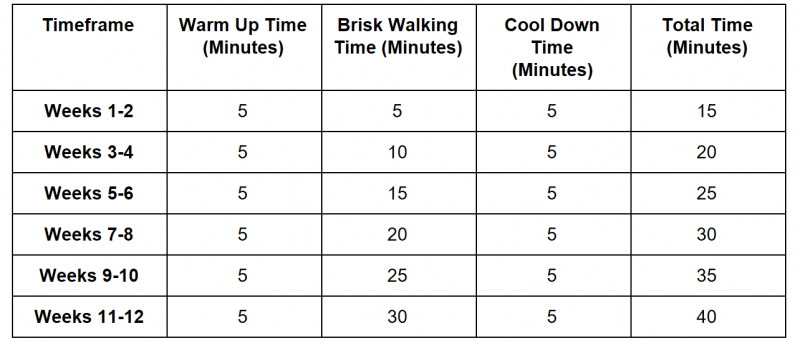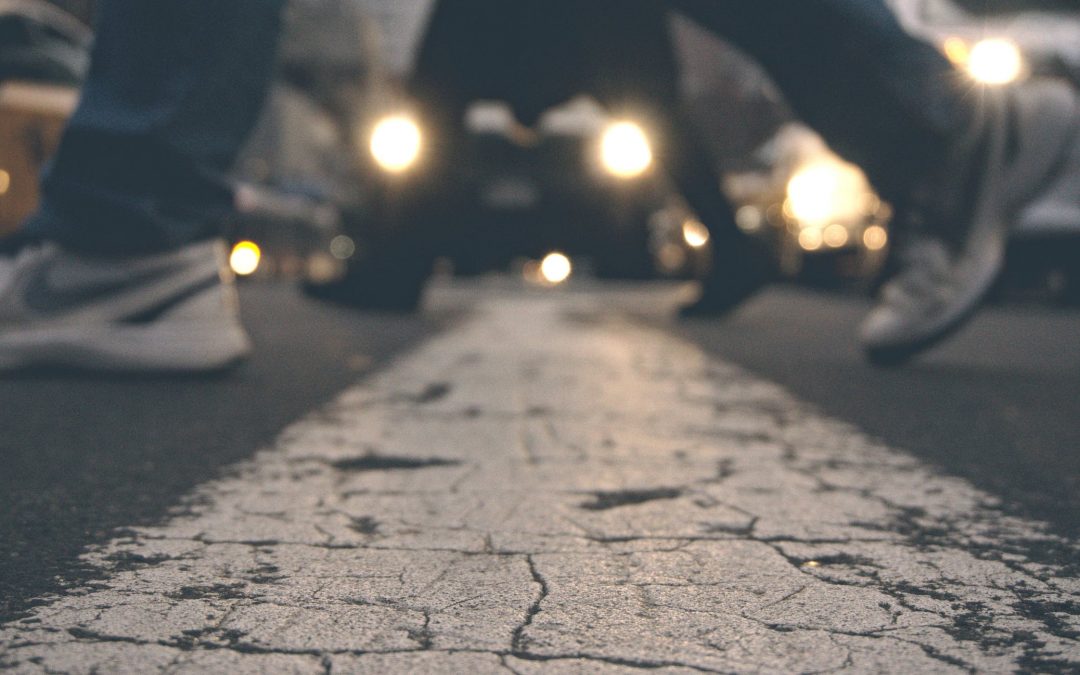Winter blues got you feeling down? Mother nature has been brutal this winter season but it looks like we are finally starting to get a break. With this nicer weather just around the corner, it’s time to think about getting outdoors and getting active. Whether you have a few holiday pounds you’re looking to shed, your doctor recommended a less sedentary lifestyle, or you’re just ready to get out of the house after a long winter and get some fresh air, a walking program can be a great first step!
Walking is a basic, low impact exercise that is very beneficial for your health and easy to start. It is one form of exercise that we all have access to without the high cost of gym memberships or the need for specialized equipment.
Some of the benefits of a walking include:
- Maintaining a healthy weight
- Improving balance and coordination
- Stress management
- Lowers risk of high blood pressure, high cholesterol, and diabetes
- Decreased pain associated with chronic low back pain and osteoarthritis
This blog will outline how you can start your very own walking program and develop a more active and healthier lifestyle. Just remember, the hardest part is walking through the front door, so grab your sneakers and grab a friend and get outside!
When to consult your doctor:
Before beginning a walking program or any other exercise program, consult with your doctor or physical therapist if you have any of the following:
- History of heart problems
- Chest pain or shortness of breath with physical activity
- History of fainting, light headedness, or dizziness
- High blood pressure
- Over age 50 and have not been physically active
How to begin:
Beginning a walking program is relatively inexpensive. In order to begin all you need is a good pair of shoes and some comfortable clothing. Pick a location where you will enjoy walking, this could be a park, walking trails, your neighborhood, or even the local mall.
What to look for in a good pair of walking shoes:
- Arch support within the shoe that fits with the arch of your foot
- A firm cushioned sole to help with shock absorption
- A roomy toe box so that your toes aren’t getting squished when walking
- A well fitting heel cup so that your heel doesn’t slip out of your shoe when walking
Walking can help a variety of conditions:
Walking and aerobic exercise has been shown to be beneficial for a variety of conditions including knee and hip osteoarthritis and chronic low back pain.
Osteoarthritis (OA) is a chronic and often progressive disorder associated with changes in the joint surfaces. Risk factors for developing OA include genetics, female gender, past trauma, advancing age, and obesity. There are also mechanical factors that can influence the progression of OA. At the knee, mechanical factors including adduction motion, malalignment, and decreased quadriceps strength can influence the progression of OA4. The joints most commonly affected are the hands, knees, hips, and spine.
Walking has been shown to help improve pain and disability caused from osteoarthritis10. Aerobic exercise, when compared to strengthening/weight training programs are shown to be more beneficial in decreasing pain and dysfunction in people with OA. Aerobic walking has also been shown to improve walking mechanics more than a weight training program. These improvements in walking lead to decreased pain with daily activities8.
For more information related to the benefits of strengthening and aerobic exercise, see our blog post “Beating Knee Osteoarthritis Without Surgery” by Josh Gelfand, PT, DPT, CertDN ( Alliance PT Blog )
In addition to helping with osteoarthritis, physical activity, such as a walking, has been shown to help with chronic low back pain. Physical activity helps to increase blood flow and nutrients to the muscles of the back. Along with this, aerobic activity can also help to increase the release of endorphins which is the body’s natural pain killer! Endorphins can act in a similar way to drugs such as morphine and codeine to help reduce low back pain and decrease reliance on pharmacological agents5. Studies show that aerobic exercise results in decreased ratings of pain and disability in individuals with chronic low back pain.
Setting Goals:
When beginning to plan your walking program, think about what you want your end goal to be. Set a reasonable, attainable goal that you can work towards over the course of your program.
Using the American College of Sports Medicine physical activity guidelines. An example of an attainable and appropriate goal would be walking 30 minutes a day, 5 days a week. Now this 30 minutes could be performed all in one session or broken up into smaller sessions depending on what your daily schedule and physical capabilities allow.
Using this goal of 30 minutes of walking a day, let’s take a look at an example walking program. Each day you should start with a leisurely paced warm up for 5 minutes to prepare the muscles for activity. After the warm up, you should increase your walking pace to a brisk walk. We want the heart rate and breathing rate to increase. Don’t increase your speed to a pace where you feel short of breath or have difficulty speaking. Remember, it is okay to take rests as needed during your walking time.
Walking Program Example:

*Choose 5 days a week to perform the walking program
Tracking Progress:
This is a basic walking program that progresses every 2 weeks. You can use this example or create one of your own. This example uses minutes as a way to track progress but there are other measures you can use as well, including:
- Number of steps- you can use a FitBit or pedometer to keep track of this
- Mileage- keep track of how many miles you walk and progress the distance
- Laps- if walking on a track or in a mall, you could use number of laps to track progress
Feeling overwhelmed with the idea of trying to include a 30 minute walk into your daily routine? Ease into it, begin with a shorter amount of time and work your way up. There are also ways to increase the amount you walk throughout the day. Here are some tips:
- Park further from the door at the grocery store, get those extra steps in as you walk across the parking lot
- Use the stairs instead of the elevator when you go places
- Go for a walk on your lunch break, everyone needs a good dose of fresh air come spring time!
Lastly, but most importantly, let’s talk about SAFETY!
- When walking, remember to always be aware of your surroundings
- Let someone know where you are going and when you will be back
- If walking at night, be sure to wear reflective clothing
- During the day, wear bright colors so you are more easily seen by cars
Now that you have the knowledge to start your very own walking program, go get out there and enjoy the sunshine this spring!
Kimberly Wallingford MacVane, PT, DPT, CertDN
References:
1. Bhatia D, Bejarano T, Novo M. Current interventions in the management of knee osteoarthritis. Journal of Pharmacy & Bioallied Sciences. 2013;5(1):30-38. doi:10.4103/0975-7406.106561.
2.Ettinger WH, Burns R, Messier SP, Applegate W, Rejeski WJ, Morgan T, Shumaker S, Berry MJ, O’Toole M, Monu J, Craven T. A Randomized Trial Comparing Aerobic Exercise and Resistance Exercise With a Health Education Program in Older Adults With Knee 3.OsteoarthritisThe Fitness Arthritis and Seniors Trial (FAST). JAMA. 1997;277(1):25–31. doi:10.1001/jama.1997.03540250033028
4.Felson DT. Risk factors for osteoarthritis: understanding joint vulnerability. Clin Orthop Relat Res. 2004b;427(Suppl):S16–S21
5. Gordon R, Bloxham S. A Systematic Review of the Effects of Exercise and Physical Activity on Non-Specific Chronic Low Back Pain. Gatchel RJ, ed. Healthcare. 2016;4(2):22. doi:10.3390/healthcare4020022.
6. Hunter DJ, Eckstein F. Exercise and osteoarthritis. Journal of Anatomy. 2009;214(2):197-207. doi:10.1111/j.1469-7580.2008.01013.x.
7. Meng XG, YueSW. Efficacy of aerobic exercise for treatment of chronic low back pain: a meta-analysis. Am J Phys Med Rehabil. 2015 May; 94(5):358-365. doi: 10.1097/PHM.0000000000000188.
8. Messier SP, Thompson CD, Ettinger WH. Effects of Long-Term Aerobic or Weight Training Regimens on Gait in an Older, Osteoarthritic Population. Journal of Applied Biomechanics.1997;13:205-225
9. Messier SP, Gutekunst DJ, Davis C, et al. Weight loss reduces knee-joint loads in overweight and obese older adults with knee osteoarthritis. Arthritis Rheum. 2005;52:2026–2032
10.Roddy E, Zhang W, Doherty M. Aerobic walking or strengthening exercise for osteoarthritis of the knee? A systematic review. Annals of the Rheumatic Diseases 2005; 64:544-548
11.Slemenda C, Brandt KD, Heilman DK, et al. Quadriceps weakness and osteoarthritis of the knee. Ann Intern Med. 1997;127:97–104

Recent Comments